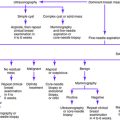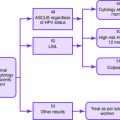Chapter 9 CHEST PAIN IN WOMEN
Chest pain is a very common complaint of patients presenting to the emergency room, as well as those presenting to outpatient clinics. More than 50% of patients presenting to the emergency department with chest pain have acute coronary syndrome, pulmonary embolism, or heart failure. However, most patients presenting to outpatient departments have diseases such as stable angina, musculoskeletal disorders, gastrointestinal disease, pulmonary disease, or psychiatric disorders.
Medications Linked to Chest Pain
Causes of Chest Pain in Women
Key Historical Features
✓ Type of pain (pleuritic pain vs. nonpleuritic pain; crushing pain vs. sharp versus burning)
✓ Prior episodes of chest pain
✓ Exacerbating factors, especially exercise
✓ Relieving factors, especially rest or nitroglycerin
✓ Worsening of pain with certain movements
✓ Associated symptoms, especially cardiac symptoms
✓ Obstetric/gynecologic history
✓ History of recreational drug use, smoking, alcohol use
Key Physical Findings
✓ Evaluation of vital signs, including pulse oximetry
✓ General assessment of well-being
✓ Cardiovascular examination for rhythm, rate, murmurs, heart sounds, apical impulse, peripheral pulses, and jugular venous distension
✓ Pulmonary examination for the presence of abnormal lung sounds, egophony, or dullness to percussion
✓ Abdominal examination for tenderness, organomegaly, or masses
✓ Rectal examination to evaluate for bleeding
✓ Neurologic examination for evidence of a stroke
✓ Skin examination for evidence of herpes zoster
✓ Musculoskeletal examination for evidence of chest wall, neck, or shoulder tenderness
✓ Extremity examination for evidence of deep vein thrombosis
Suggested Work-Up
| Electrocardiography | To evaluate for evidence of ischemia, pericarditis, pulmonary embolism, arrhythmias, or heart failure |
| Chest radiography | To evaluate for pulmonary disease, heart failure, or TAD |
| Serum markers of myocardial damage (creatine kinase, isoenzyme of creatine kinase with muscle and brain subunits (CK-MB), troponin T, troponin I) | To evaluate for acute coronary syndrome |
Additional Work-Up
| Complete blood cell count | To evaluate for infection or anemia |
| Amylase and/or lipase measurement | If pancreatitis is suspected |
| Aspartate transaminase (AST), alanine transaminase (ALT), and bilirubin measurement | If liver or biliary disease is suspected |
| Abdominal ultrasonography | If liver or biliary disease is suspected |
| Upper endoscopy | If peptic ulcer or gastric cancer is suspected |
| Mammography | If a breast mass is palpated or the patient is due for breast cancer screening |
| Commuted tomographic (CT) scan of chest | If pulmonary embolism, TAD, or lung cancer is suspected |
| D-Dimer | When used in conjunction with scoring systems, a normal D-dimer, along with a low pretest probability of a deep vein thrombosis or pulmonary embolism, can be used to safely withhold further evaluation such as lower extremity compression ultrasonography, ventilation-perfusion scanning, or CT angiography |
| Ventilation perfusion scanning or CT angiography | If pulmonary embolism is suspected |
| Cardiac stress testing | If coronary artery disease is suspected |
| CT scanning of abdomen | If an intra-abdominal malignancy, abscess, or other disease process is suspected |
| Arterial blood gas measurements | If the patient is hypoxic or has evidence of significant pulmonary disease |
| Blood cultures | If an infectious process is suspected |
| Sputum cultures | If pneumonia is suspected |
| Echocardiography | If heart failure, pericarditis, valvular disease, or other cardiac disease processes are suspected |
| Rib series (radiography) | May be considered if rib fracture is suspected |
| Brain natriuretic peptide measurement | If heart failure is suspected |
| Venous compression ultrasonography | To evaluate for deep vein thrombosis in a patient who may have a pulmonary embolism |
Boie ET. Initial evaluation of chest pain. Emerg Med Clin North Am. 2005;23:937-957.
Butler KH, Swencki SA. Chest pain: a clinical assessment. Radiol Clin North Am. 2006;44:165-179.
Cayley WE. Diagnosing the cause of chest pain. Am Fam Physician. 2005;72:2012-2021.
Douglas PS, Ginsburg GS. The evaluation of chest pain in women. N Engl J Med. 1996;334:1311-1315.
Goldman L, Ausiello D, editors. Cecil Textbook of Medicine, 2nd, Philadelphia: Elsevier, 2004.
Pilote L, Dasgupta K, Guru V, et al. A comprehensive view of sex-specific issues related to cardiovascular disease. CMAJ. 2007;176(6 Suppl):S1-S44. [Erratum in CMAJ 2007;176(9):1310.]




